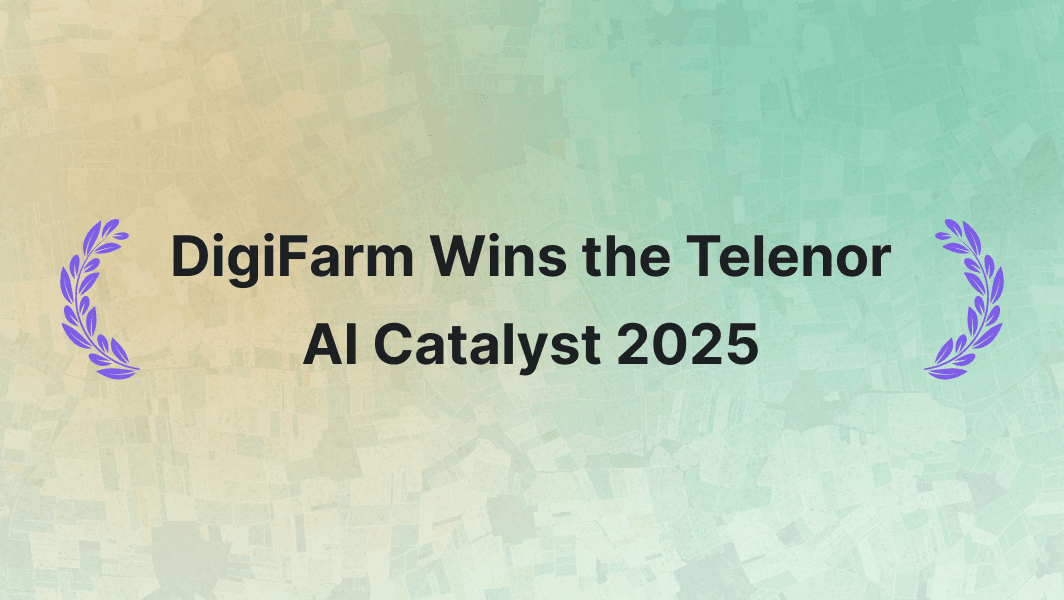Knowledge Base
Aug 2023
What data can help farmers and agricultural companies to increase their profit?
Knowledge is power. As a general rule, the most successful man in life is the man who has the best information. (Benjamin Disraeli - politician)
Which spheres of agriculture can be influenced by availability of certain information? A possibility to forecast, save time and resources and as a result of this - save money. Let’s take a closer look at exactly what kind of information can help the AG value chain to cut down on expenses and accelerate processes.
Precise Field Boundaries.
Having precise and updated field boundaries is the first step to a successful and effective use of the so-called digital farming technologies, as this data paves the road for all types of precise measurements and estimations about the fields, effectively allowing action to be taken on top of the data.
This data allows farmers to correctly evaluate the quantity of seeds, fertilisers and time that will be spent on the cultivation and harvest of a certain field. This information also allows us to better estimate harvest on each of the fields which provides very valuable information for farmers as it allows them to plan their profits or quantity of the cattle that this harvest will go to.
For insurance companies this data gives a possibility to perform all calculations related to the insurance risks for the farmers without actually going to the location and performing a manual analysis there, such as historical biomass accumulation trends and in-season identification of incidents and validation of claims during the harvest.

Assessing Growing Cultures.
This information is important for farmers, crop history, I.e. changing the crops in order to prevent the degradation of the soil and its productivity, is especially important for crop rotation as it affects the soil organic matter accumulation trends over time and consequently each field's nitrogen fertiliser needs.
This can also be helpful for insurance companies to quickly calculate the possible price of the harvest and to correctly assess insurance risks, as well as to other types of companies in the ag value chain by allowing them to correctly define their regional market share structure based on the types of crops present in each region. Governments can also use this information to have a general knowledge of what makes up their gross domestic product so they can predict export or import of this or that agricultural product based on each field's crop and expected performance compared to previous seasons.
Productivity Zones.
For farmers and farmer data providers such as FMS companies – productivity zones will help to locate the areas of field or fields which require attention and allow for a greater understanding of the heterogeneity present of each field, as they provide the historical mean values for the vegetation index data in the form of zones within the fields. Several types of farm operations can benefit from an in-depth understanding of the field's historical heterogeneity, such as fertilisation and seeding.
This information can greatly enhance decision-making on where to apply resources on each field for an effective crop development, creating the potential for increasing yields without increasing field input costs.

Weed Detection.
With rising costs for all main agricultural inputs over the years, it's very important to make sure any resources allocated on the field are not wasted. Part of that effort is the use of pesticides to prevent weeds from competing for resources with the crop, but an efficient use of those inputs is also necessary as not all areas within a field will have the presence of invader plants.
In that sense, being able to accurately detect which areas within a given field actually require the use of pesticides can lead to great cost savings, up to 70% based on precision agriculture literature.
Time-Series of Vegetation Data.
The Time-Series of vegetation data provides similar information to productivity zones, but in the form of graphs with average values for each Sentinel 2 band and vegetation index for each crop over the years, allowing the identification of anomalies and patterns in crop development as well as for the comparative analysis of the development of different field trials over time.

Vegetation indices.
Vegetation indices (IV's) are equations that combine surface reflectance values from two or more bands of the electromagnetic spectrum in order to evaluate some property of the vegetation. Although they are not able to directly quantify any component of the vegetation, several IV's have great correlation with field variables (e.g. NDVI x green biomass), thus allowing to infer absolute values of a particular component of the vegetation in order to define the guidelines for field operations.
Thus, the ability to access historical data of vegetation indices for a particular crop is very valuable as it allows us to have a very clear picture of the current and past state of the crop over the seasons to support various types of agronomic decisions.
Ready to revolutionize your business and take it to the next level?
Don't miss out on the latest AgTech solutions that can transform your operations and boost your profits. Contact our experts today to learn more about our cutting-edge products and services. Visit our website to explore pricing options and discover how we can help you stay ahead of the competition.
Technical Partners That Believe In Us















